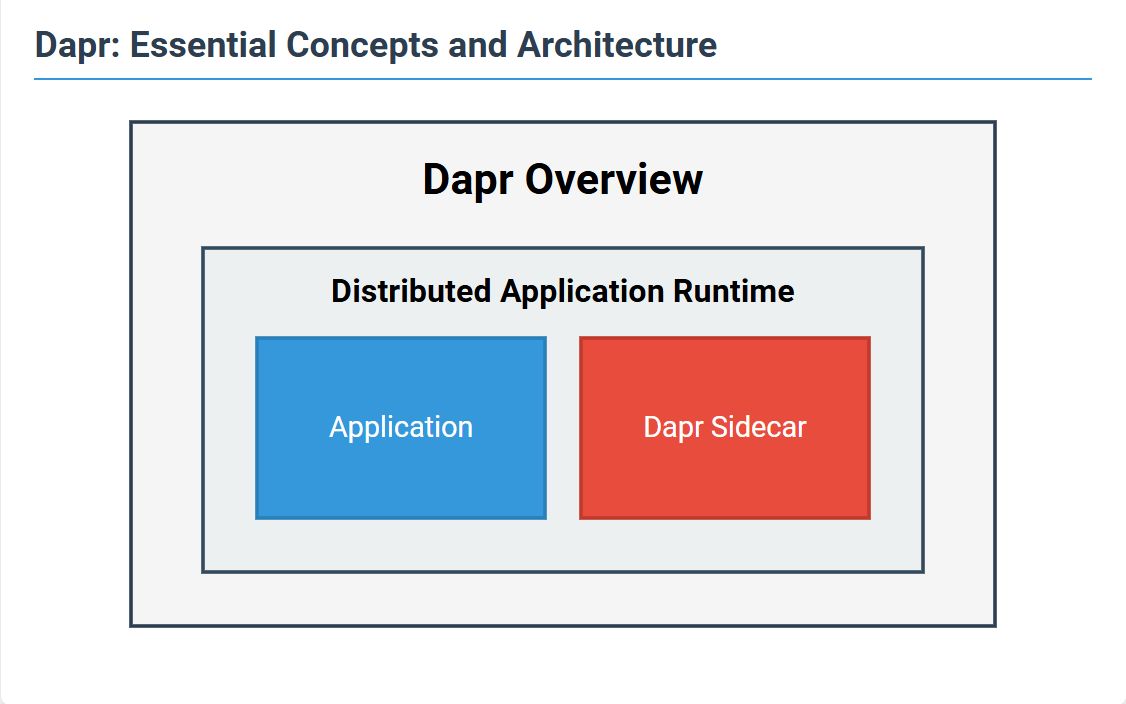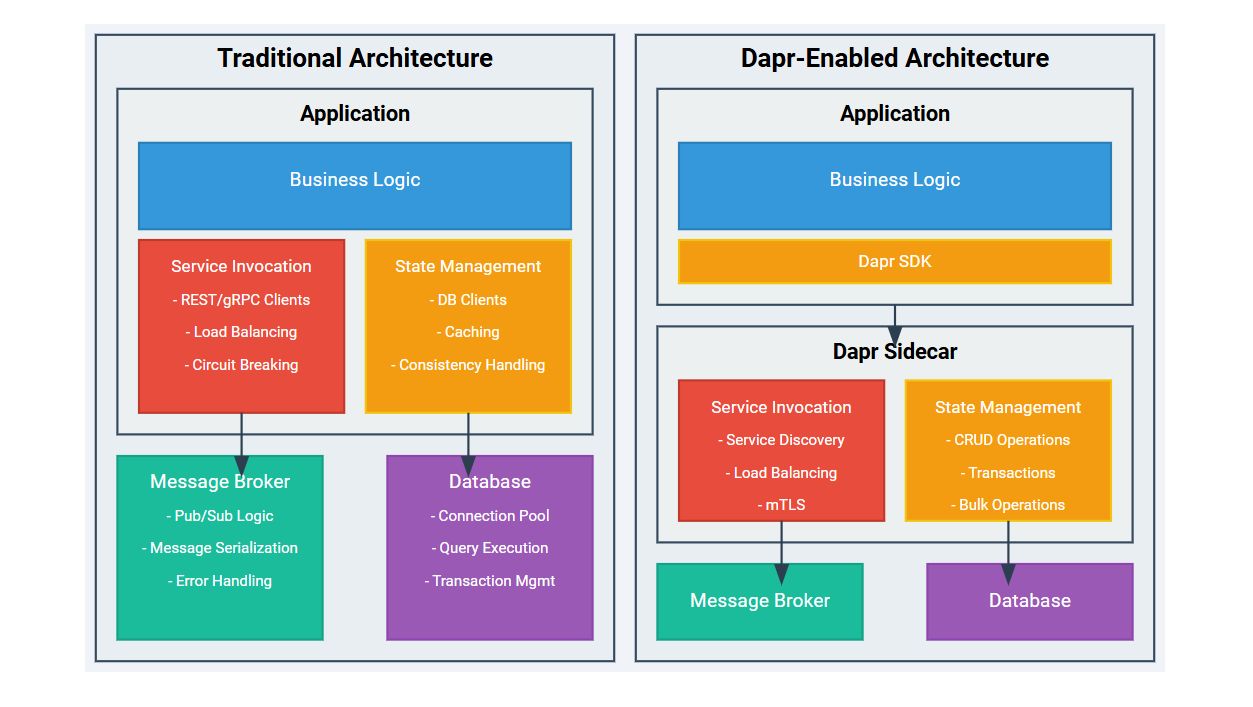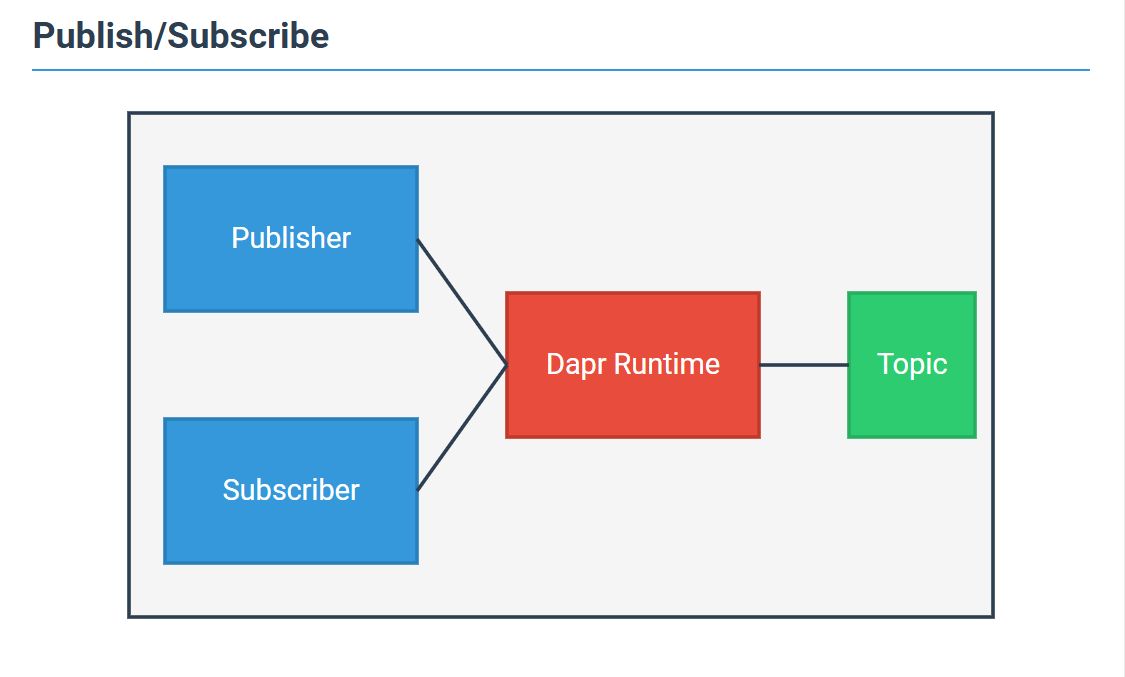Simplifying Microservice Development with Dapr
Dapr is an abstraction layer in front of your microservice's core logic and external services, allowing your core code to be agnostic and clean by managing the connection functionality at its core.
When you work with microservices, communication between them can quickly become complicated. Dapr (Distributed Application Runtime) was created to solve this problem.
It simplifies microservice development by handling application communication, letting you focus on business logic instead of the glue that holds everything together.
Abstraction at Its Core
Dapr provides a layer of abstraction over service communication, so you don’t need to constantly update your code or worry about version control for the communication logic. It takes care of the low-level details, like which protocol to use (it supports both gRPC and HTTP) and automatically converts between them without any manual configuration.
Bindings: Code Agnostic and Easier
One of the standout features of Dapr is how it uses bindings to handle sending and receiving messages. Bindings abstract away even more code, making your services more agnostic and less dependent on specific implementations. With bindings, you don’t have to constantly restart your services or rewrite code to fit new communication patterns. It’s a "set it and forget it" approach, which is especially helpful when scaling.
No More Message Broker Headaches
Dealing with message brokers can be a real pain, especially when you need them to reliably pass messages between services. Dapr handles all of that for you. Whether you’re using Kafka, RabbitMQ, or another system, Dapr abstracts it away, giving you a simple API for communication. You don’t need to manage the specifics—Dapr works with your targets and handles message delivery.
Built-In Network Tracing
Dapr’s built-in network tracing is another valuable feature. It tracks service-to-service communication by automatically attaching headers to requests, ensuring they reach the right destination. This allows you to monitor your microservice traffic easily without manually setting up tracing.
If backend tracing is set up in the network, this data can be visualized in tracking systems such as:
- Jaeger: A tool for monitoring and troubleshooting microservices.
- Zipkin: A system that collects timing data to identify latency issues.
- Prometheus: Primarily for metrics but can be used with tracing data.
- Elastic APM: Monitors application performance and visualizes traces.
- Grafana: Creates dashboards to visualize tracing data.
- OpenTelemetry: Collects trace data for use with various tools.
- Honeycomb: Provides real-time tracing and visualization of service interactions.
Secret Management
In addition to communication and bindings, Dapr supports secret management. You can store sensitive data securely using Dapr-supported secret stores like Azure Key Vault or AWS Secrets Manager. This eliminates the need to hardcode sensitive information in your services, keeping your app secure by design.
State Management Simplified
Another powerful feature is Dapr’s state management. Managing state in a distributed system can be tricky, but Dapr provides simple APIs to work with state stores like Redis or Cosmos DB. Whether you’re handling caching, session data, or other stateful interactions, Dapr makes it seamless, reducing complexity in your code.
Cross-Platform Flexibility
One of Dapr’s strengths is its cross-platform capability. While it integrates deeply with Kubernetes, you’re not limited to that environment. Dapr can run on any platform, whether on-premises, in the cloud, or even at the edge. This flexibility ensures Dapr can adapt to various environments without locking you into a single solution.
Sidecars in Kubernetes: The Magic Behind Dapr
The key to how Dapr works is the sidecar pattern. Dapr runs a sidecar next to each service within a Kubernetes pod, enabling all the powerful features like communication handling, tracing, and secret management. You don’t have to modify your application code—simply connect to the Dapr sidecar, and everything is taken care of.
Setting it up is easy. When deploying to Kubernetes, you install Dapr using the Dapr CLI. For each service, you add annotations to the Kubernetes deployment YAML file, and Dapr automatically starts the sidecars, connecting them to your services.
Conclusion
Dapr isn’t just a tool for microservice communication—it’s an entire platform for simplifying distributed systems. From automatic protocol conversions and network tracing to state management, bindings, and secret handling, it takes care of the heavy lifting.
Using sidecars, Dapr integrates smoothly into your Kubernetes setup, ensuring your microservices communicate effectively with minimal effort.
See official Dapr documentation to get started.


